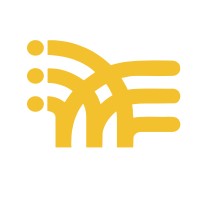Accrol Group Holdings Plc (LON:ACRL) today announced its unaudited interim results for the six months ended 31 October 2017. Zeus Capital said: We believe a strengthened management team is executing a successful recovery plan and maintain its unique market position as the UK’s leading independent tissue converter. Clearly the year to April 2018 was going to be a difficult year for the group, and our revised 2018E forecasts are very much worst case, with three months of the financial year to go. Importantly, we leave our expectations for 2019E and 2020E unchanged and remain comfortable with our longer-term trading assumptions.
H1 results: Accrol has reported H1 results delivering revenue growth of 13.1% to £72.3m. Adjusted gross profit was down 34.7% to £11.9m as margins fell from 28.4% in H1 2017 to 10.7% in H1 2018, reflecting primarily the adverse impact of parent reel pricing. Administrative costs also increased in excess of £2.0m YOY mainly due to costs associated with Leyland and Skelmersdale. This has resulted in a loss at the adj. EBITDA level of £1.6m (vs. a profit in H1 2017 of £7.1m). Net debt was up by £9.4m to £29.3m, with negative cash conversion due to higher inventories and trade debtors. Following the successful placing to raise a net £16.8m this figure will be lower post period end, and management are comfortable of trading within its covenants.
Key priorities: The leadership team has been strengthened with the addition of Don Coates as COO, formerly CEO of DS Smith Paper. The company are making progress negotiating price increases and are beginning to see the positive impact in the results, we would expect this momentum to continue to build through H2. The product range is being rationalised and a number of cost saving initiatives are being pursued including a headcount reduction and increased investment in equipment maintenance to ensure efficiency. While the group’s turnaround strategy is still in its’ early stages, we are encouraged by progress made to date.
Forecasts: We lower our April 2018E full year forecasts, reflecting lower revenues (6.0% reduction on previous forecast) as the group continue to drive through price increases to recover pulp input costs, and it is expected that some volume will be lost through this process. On the cost side, higher than expected distribution costs continue to be reviewed. We now expect a £0.8m loss at the adj. EBITDA level for the full year vs. our previous forecast of £0.0m, and believe this to be worst case. Importantly, we leave our 2019E and 2020E forecasts unchanged and remain comfortable with our longer term assumptions.
Investment view: We believe Accrol Group Holdings plc is beginning to gain traction with price rises and recent dollar weakness if persists, should help the industry over the medium term. Accrol continues to have a unique strategic position in the market, which carries strategic value that is not currently in the equity value in our view.


